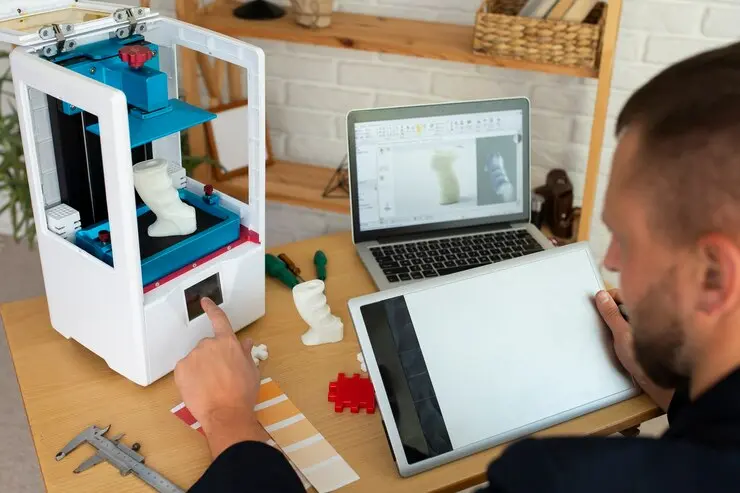Introduction to Polar 3D Printing
Ever stumbled upon a 3D printer and wondered how it could get any better? Well, enter the world of Polar 3D printing, a game-changer in the realm of additive manufacturing. Unlike traditional 3D printers that move in straight lines, Polar 3D printers operate on a circular platform, offering a fresh perspective on creating objects. This innovative approach not only makes them uniquely efficient but also intriguing for hobbyists and professionals alike.
Polar 3D printers work by rotating the build platform around a central point while the print head moves in and out, covering the radius of the circle. This method allows for smoother curves and can potentially speed up the printing process. It’s a fascinating evolution in 3D printing technology, blending precision with creativity.
The Mechanics Behind the Magic
At the heart of a Polar 3D printer lies its unique mechanical design. This design reduces the need for multiple moving parts, leading to a more stable and less error-prone printing process. Imagine a print head that moves gracefully in harmony with a rotating platform, creating objects with unparalleled precision. This simplicity in motion not only reduces wear and tear but also makes the printer quieter – a welcome feature for anyone with a printer at home.
Furthermore, the reduced movement means that Polar 3D printers can be more compact and require less maintenance. This makes them an excellent choice for schools, small businesses, and anyone looking to dive into 3D printing without the hassle of constant upkeep.
Advantages Over Traditional Models

One of the standout benefits of Polar 3D printers is their efficiency. By minimizing the movement needed to print objects, they can operate faster than their Cartesian counterparts. This efficiency doesn’t just save time; it can also save on energy costs, making Polar 3D printers a more sustainable option for environmentally conscious users.
Additionally, the circular build platform allows for a unique way to maximize print space. Instead of being confined to a square area, designs can be optimized to fit within a circle, often allowing for larger prints within the same footprint. This spatial optimization is a boon for designers and creators looking to push the boundaries of their creative projects.
The Creative Potential Unleashed
With Polar 3D printers, the creative possibilities are as vast as your imagination. Whether you’re crafting intricate jewelry, prototype parts, or artistic sculptures, the unique motion of Polar printing adds a new dimension to your creations. The ability to print smoother curves and complex geometries with ease opens up a world of design opportunities not easily achievable with traditional printers.
Moreover, educators and students can greatly benefit from the hands-on learning experience provided by Polar 3D printers. They offer a tangible way to explore concepts in geometry, engineering, and design, making learning both fun and impactful.
Choosing the Right Polar 3D Printer
When it comes to selecting a Polar 3D printer, there are a few key factors to consider. First, think about the size of the objects you plan to print. The build area of a Polar 3D printer can vary, so it’s important to choose one that fits your needs. Next, consider the material compatibility. While most Polar 3D printers work with standard filaments like PLA and ABS, some models may offer more versatility with materials.
Another consideration is the printer’s resolution and speed. Higher resolution printers can create more detailed objects, but may print slower. Balancing these factors based on your needs will help you find the perfect Polar 3D printer for your projects.
Getting Started with Your Polar 3D Printer
Embarking on your Polar 3D printing journey is an exciting venture. To get started, familiarize yourself with the printer’s manual and understand its specific setup procedures. Begin with simple projects to get a feel for the printer’s capabilities and how to optimize your designs for the circular build platform.
Joining online communities of Polar 3D printing enthusiasts can also provide invaluable support and inspiration. Sharing experiences and troubleshooting together can enhance your learning curve and open up new avenues for creativity.
Tips for Perfect Prints
Achieving the perfect print requires a bit of trial and error, but there are several tips to help you along the way. Maintaining a clean and level build platform is crucial for ensuring your prints adhere properly. Experimenting with different print speeds and temperatures can also help you find the sweet spot for your specific filament type.
Don’t forget the importance of slicing software settings. Optimize your designs for the unique characteristics of Polar 3D printing by adjusting layer heights, infill patterns, and support structures as needed.
The Future of Polar 3D Printing
As Polar 3D printing technology continues to evolve, we can expect to see advancements in speed, precision, and material compatibility. The potential for even more compact and efficient models opens up exciting possibilities for home users, educators, and industries alike.
With ongoing innovation, Polar 3D printers are set to redefine the boundaries of 3D printing, making it more accessible and versatile than ever before. The future looks bright for this intriguing approach to additive manufacturing, promising a world where our imaginations are the only limit.
Conclusion: A New Era in 3D Printing
Polar 3D printers represent a fascinating shift in the way we think about 3D printing. Their unique design and operational efficiency offer a fresh perspective on creating three-dimensional objects, from the intricacies of design prototypes to the beauty of artistic creations. As we continue to explore the potential of Polar 3D printing, it’s clear that this technology is not just a novelty but a significant step forward in the evolution of additive manufacturing.
Explore the rest of our website Tech Glints, intriguing articles await you! Interested in contributing? Simply click the contact button at the top right. Thank you!
